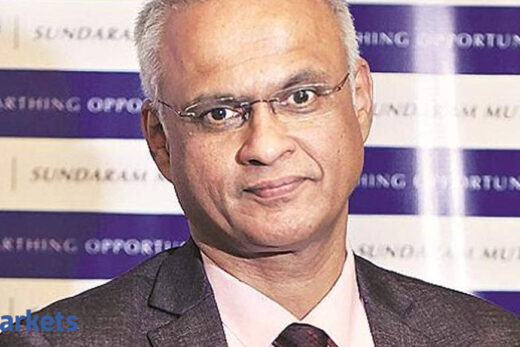You like consistent compounders. Would you be willing to look at the new age companies that are going in for IPO? Can they be the super champion franchises going forward whether it is a Nykaa, Policybazaar or a Zomato, most of them are operating in a space where they are considered to be monopolistic or at least a duopoly?
Absolutely. There is no reason why the country will run out of Asian Paints and Titans of the world. There are plenty of unlisted and newly listed companies which are first formalising what were hitherto fragmented industries. They are formalising it and then consolidating right. So what Titan has done for jewellery over the last 25 years, what Pidilite has done since over the last 40 years, you could argue that Nykaa is doing it in cosmetics.
If you look at the next two to three years of IPOs that are heading towards the market, many are actually explicit plays on formalising what was hitherto informal and then consolidating for example say Licious. Now the challenge in all this is the execution. The theory about all this is very easy, but to execute in India is to first formalise a deal with political lobbying from the informal sector than to consolidate.
Read Also: Invest in master franchises as inflation sets in
So consolidating decade after decade and generating high amounts of cash flow is so tough that out of 5,000 listed companies, barely 50 are able to do this. That is what will happen to the new spate of IPOs as well. Out of every 10 IPOs, one or perhaps two will be great franchises. The other eight-nine will be also-runs. That is where the discernment has to come in. Just because a new IPO is coming up, does not make it a great investment.
People like us have to do the work and figure out whether the promoter really knows how to build a great franchise,to generate cash flow, to execute and generate 25% free cash flow growth. Most promoters in India do not know how to do that and hence one has to be very discerning about the new IPOs. I reckon one of 10 will go on to be great compounders, master franchises but 9 out of 10 will fall by the wayside.
There is a big uptrend visible in capital good space. There are engineering companies which are debt free. They have some IP in them. The next big innovative wave in India will come because of IP and because of science. How are you participating in this cyclical upturn?
Our research meeting takes place every Friday. A lot of those discussions are taking place in our research meeting today. What we have already done over the last four-five months is to build a sizable position in Grindwell Norton, a leader in abrasives. Alongside Carborundum, Grindwell Norton has a hammerlock on an essential part of industrials which is abrasive material used for cutting, It is used in auto industry and high tech engineering.
It has a great history of stable capital allocation. We have already invested in Grindwell Norton. We are looking for more investments in high quality industrials. Here is the challenge in investing in industrials. You want to avoid companies which have heavy interplay with the government tendering sector as these could face working capital challenges.
The second thing is you want to avoid companies whose capital allocation history is irregular because naturally industrials are a volatile sector. If the promoter has a poor track record of capital allocation, you as a shareholder could lose your shirt and therefore you have to look for industrials which are largely a play on private sector capex and have a great history of rational stable capital allocation. Hence Grindwell Norton.
The other way we are trying to profit from the capex cycle upturn is by having an investment in a bank like Axis Bank. Axis Bank is part of the workings of the capital portfolio and we are also seeing the demand for project finance is returning and we are hoping that a high quality private sector lender like Axis Bank under Amitabh Chaudhry’s leadership can profit from that. There is more to be done here but it is a sector where one has to tread carefully because it is populated by poor quality capital allocators and companies which get very dependent on government tendering.
What in your analysis has been the average return for expensive stocks? Pidilite and Asian Paints or Titan stocks are trading above the historical averages. Do future returns get compromised? In the past, even in the US market. you bought Gillette which at that time was not part of P&G. If you have bought them expensive, you have not made money for years?
This is a common misperception. In my investing career, I must have met dozens of Indian investors who will tell you very sombrely that I know you bought Infosys in 2000 and 2008 tak woh share price nahi aya (the share price did not rise before 2008) and that sort of experience scars investors. Obviously, there will be episodes like that. The American stock market in 1967 stood exactly in the same place as it stood in 1983. So if from 1967 to 1983, the US stock market has not risen, obviously there will be dozens of stocks which over that 17 year period made very little money for American investors. All of these facts are very well known in India.
However, there is another way to understand history which is just to look at data rationally. I am going to give some numbers from chapter six of Diamonds in the Dust. “Suppose over the last 10 years, every year I had invested Rs 100 in Asian Paints at the year’s low. So assume for a minute that I am God and I am buying Asian Paints at the year’s low, my 10-year return would be something around 27% because I am buying at the year’s low but on the other hand, assume that I buy Asian Paints on January 1 every year and assume for a minute I cannot time the market, my 10-year return would be around 24%.
Suppose I am the unluckiest investor in the world. I buy Asian Paints every year at the year’s high. So 10-years in a row, I buy Asian Paints at a year’s high, I would still compound at 19%. We would get very similar results in Pidilite, Titan, Divi’s Labs and other consistent compounders.
Now why do we get that? Why are we able to make money from these franchises regardless of when you buy them because the underlying compounding in cash flows is around 25% and that is the analysis we have given you in Chapter six of Diamonds in the Dust. We have also done this sort of analysis for other Indian stocks say L&T, Bharti Airtel and so on. We have shown you that the ability to render timing irrelevant is only there if the underlying franchise grows the business at 25% year after year after year and that is why with our type of stock timing, the PE multiple goes out of the window.



